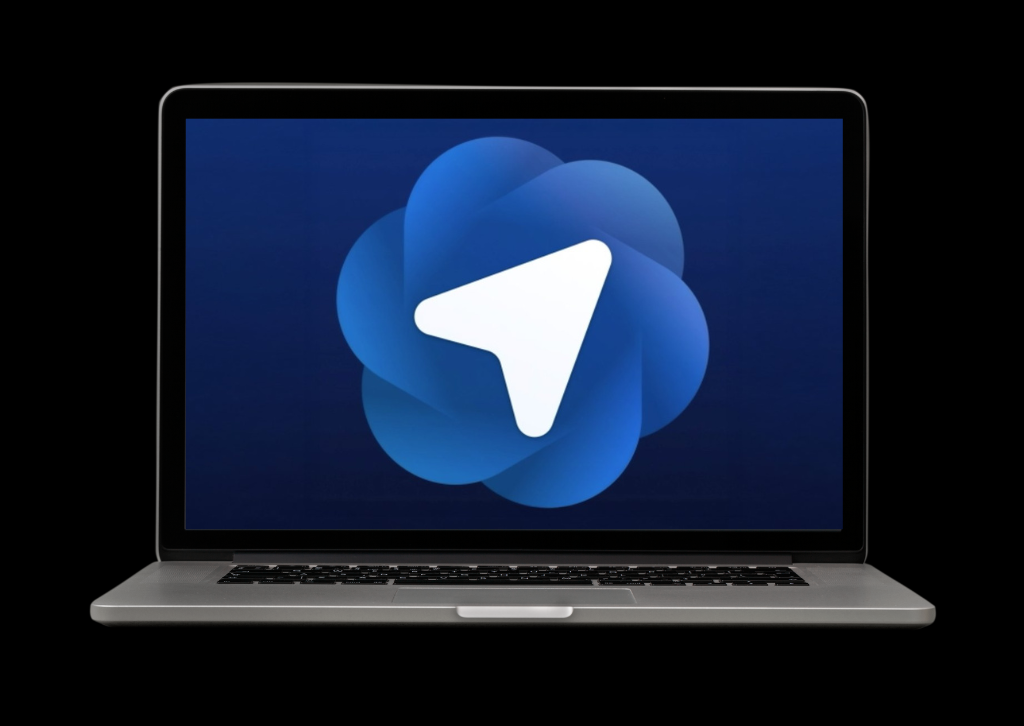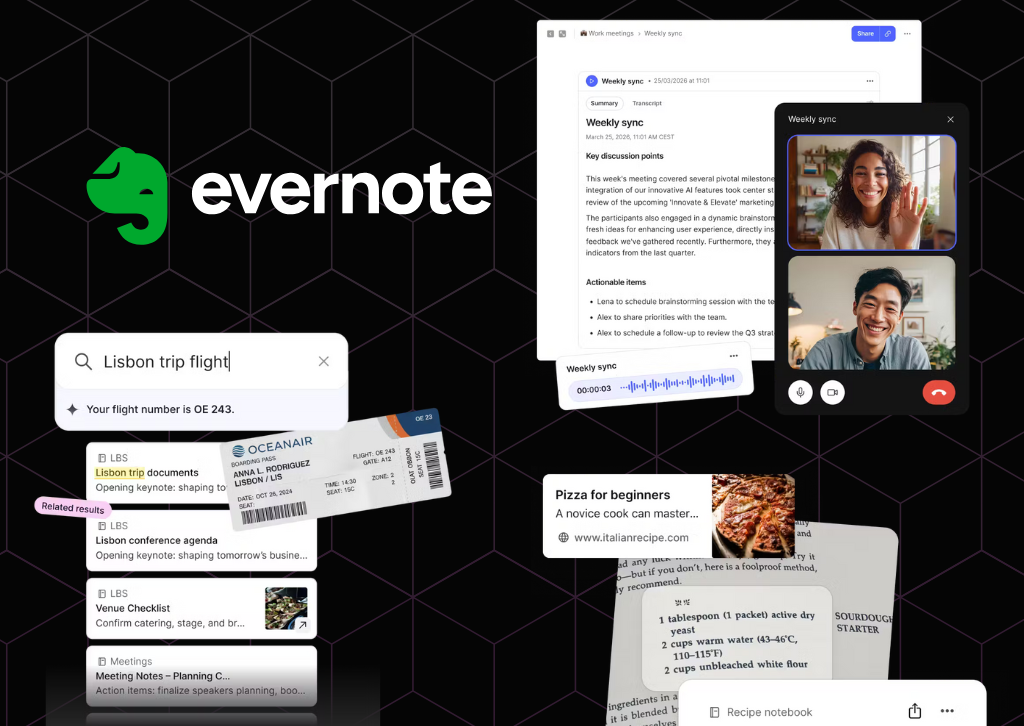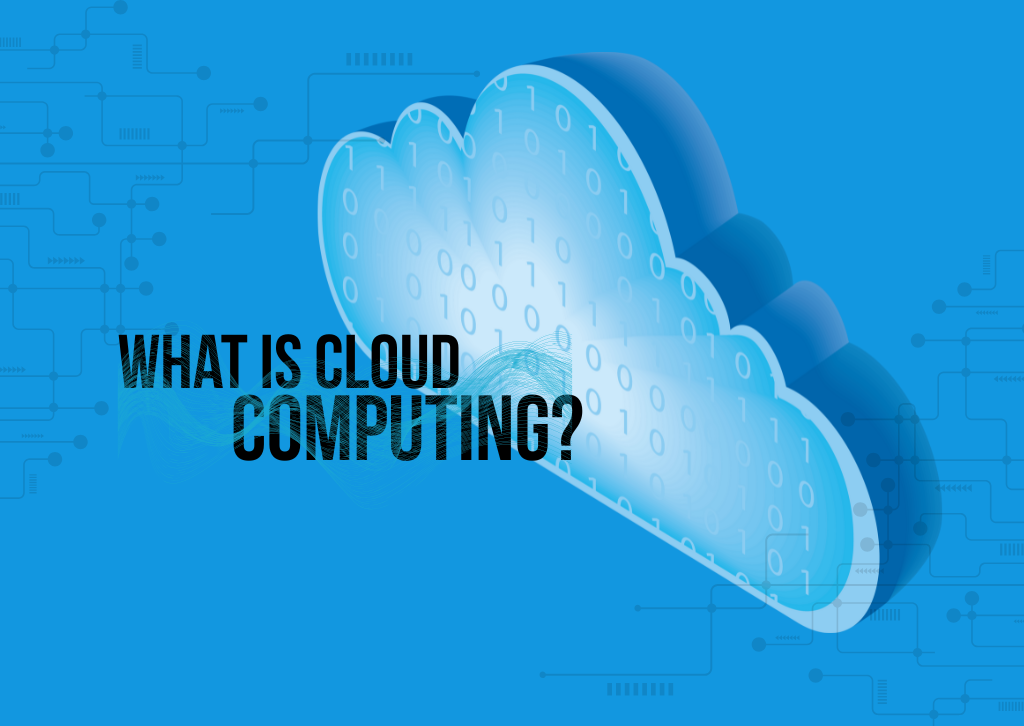Apps
OpenAI Takes on Chrome: Inside the Launch of ChatGPT Atlas Browser

OpenAI has fired the opening shot in a new chapter of the browser wars. On October 21, 2025, the company unveiled ChatGPT Atlas, a web browser that doesn’t just display websites but actively understands and interacts with everything users see. Currently available only for macOS, Atlas represents OpenAI’s boldest move yet to challenge Google’s dominance in how people access and navigate the internet.
A Browser Built Around AI
What makes Atlas different from the dozens of browsers already competing for market share? The answer lies in its core design philosophy. Rather than bolting AI features onto an existing browser, OpenAI built Atlas from the ground up with ChatGPT as what the company calls “the beating heart” of the browsing experience.
When users open a new tab in Atlas, they’re presented with two options: enter a URL or ask ChatGPT a question directly. This fundamental design choice signals a dramatic shift in how we might interact with the web. Instead of typing search queries into a box and clicking through results, users can have conversational exchanges that blend traditional browsing with AI assistance.
The browser features a persistent ChatGPT sidebar that can analyze whatever page users are viewing. Need a summary of a lengthy article? Want an explanation of complex technical documentation? Looking for instant answers about the content on screen? The sidebar is always available, ready to help users make sense of the web.
Built on Chromium, the open-source engine that powers Google Chrome, Atlas supports familiar features like Chrome extensions, tabs, autofill, and the ability to import bookmarks and settings from existing browsers. This means users won’t have to abandon their favorite tools or start from scratch.
Memory That Connects Your Digital Life
One of Atlas’s most powerful and controversial features is its memory system. The browser can remember not just your searches and visited sites but can also access your entire ChatGPT conversation history to customize responses. This creates a seamless connection between your chatbot interactions and your browsing behavior.
The practical applications are compelling. Users can ask questions like “Find all the job postings I was looking at last week and create a summary of industry trends so I can prepare for interviews.” Atlas can pull together information scattered across tabs, browsing history, and previous conversations to deliver comprehensive answers.
However, OpenAI emphasizes that users maintain complete control over these memories. The feature is entirely optional and can be disabled. Users can view all stored memories in settings, archive those no longer relevant, and clear browsing history to delete associated memories. There’s also a toggle in the address bar to decide which sites ChatGPT can or cannot see. When visibility is turned off, ChatGPT can’t view page content and no memories are created.
For those seeking maximum privacy, Atlas includes an incognito mode where browsing isn’t linked to your ChatGPT account and isn’t saved in browser history.
Agent Mode: AI That Acts on Your Behalf
Perhaps the most ambitious feature in Atlas is Agent Mode, currently available in preview to Plus, Pro, and Business subscribers. This capability allows ChatGPT to perform tasks autonomously within the browser, opening tabs, clicking buttons, and navigating websites to complete complex workflows on the user’s behalf.
The use cases OpenAI highlights are surprisingly practical. Planning a dinner party? Give ChatGPT a recipe and ask it to find a grocery store, add all ingredients to a cart, and place an order. Need to research competitors? Ask it to open past team documents, perform new competitive research, and compile insights into a brief.
When users initiate a task, ChatGPT may ask permission to start opening tabs and clicking in the browser. It’s an early-stage experience that may struggle with complex workflows, but OpenAI promises rapid improvements in reliability and task success rates.
The company has implemented significant safeguards for Agent Mode. The AI cannot run code in the browser, download files, or install extensions. It cannot access other apps or the computer’s file system. On sensitive sites like financial institutions, it pauses to ensure users are actively watching its actions. OpenAI has clearly learned from the concerns raised about earlier autonomous AI systems and is proceeding cautiously.
Privacy and Security Concerns
The launch of Atlas has sparked legitimate questions about privacy and security. Allowing an AI system to watch and remember everything you do online represents a significant expansion of data collection, even if users technically remain in control.
OpenAI states that by default, browsing data isn’t used to train AI models. However, users can opt in to include web browsing data for training purposes. Even then, webpages that opt out via GPTBot won’t be trained on. The company has also extended its parental controls from ChatGPT to Atlas, with additional options for parents to disable browser memories and Agent Mode entirely.
Critics have pointed out similarities between Atlas and Perplexity’s Comet browser, which launched earlier this year with its own AI-powered features. Some users commenting on OpenAI’s launch video suggested that Atlas “just feels like it could be a Chrome plugin” and questioned whether the browser truly offers enough innovation to justify switching from established alternatives.
Security researchers have raised concerns about the vulnerabilities that come from giving an AI system such deep access to browsing behavior and logged-in accounts. During the livestream announcement, OpenAI’s Pranav Vishnu acknowledged these risks directly: “Despite all of the power and awesome capabilities that you get with sharing your browser with ChatGPT, that also poses an entirely new set of risks.”
The Strategic Stakes
For OpenAI, Atlas represents more than just a new product. With over 800 million ChatGPT users, the browser could provide a crucial revenue stream to help monetize that massive user base and offset the company’s substantial infrastructure costs. OpenAI has strategically hired former Chrome and Firefox developers, including Ben Goodger as Engineering Lead for Atlas, signaling serious long-term commitment to this market.
For Google, the threat is real but not immediate. Chrome’s dominance has been instrumental to Google’s online advertising empire, which generated $54 billion in the last quarter alone. Even a small slice of that market would be significant for OpenAI. When news of the Atlas launch broke, Alphabet’s stock initially dropped 4.8 percent, though it recovered as the actual features were revealed during the livestream.
Google hasn’t been standing still. The company has already integrated its Gemini AI into Chrome to add similar AI-powered features, positioning itself to defend its territory. The competition is intensifying, with multiple players now viewing AI-enhanced browsing as the next frontier.
The Future of Web Browsing
Atlas arrives at a pivotal moment. As OpenAI notes in its announcement, AI gives us “a rare moment to rethink what it means to use the web.” For decades, browsing has meant clicking links, typing URLs, and navigating through nested pages. Atlas suggests a future where conversational interaction becomes primary, and the browser doesn’t just respond to commands but anticipates needs and takes action.
Whether users will embrace this vision remains to be seen. The browser is currently limited to macOS, and many features are still in preview stages. Reliability issues with Agent Mode and legitimate privacy concerns may give potential switchers pause.
Yet the underlying premise is compelling: the web contains vast amounts of information, but finding, understanding, and acting on that information remains unnecessarily difficult. If Atlas can truly make browsing smarter, more intuitive, and more efficient while respecting user privacy, it could reshape how hundreds of millions of people interact with the internet.
The browser wars have been relatively quiet for years, with Chrome’s dominance going largely unchallenged. ChatGPT Atlas signals that the competition is heating up again, and this time, AI is the differentiating factor that could redraw the entire landscape.

TheTechReview.net is the best place for all your App reviews
Apps
Evernote v11: The Comeback Story Powered by AI

The note-taking pioneer reinvents itself with OpenAI partnership and long-awaited features
Evernote, the once-dominant note-taking app that seemed to fade into obscurity, is making a bold play for relevance with its most significant update in five years. Version 11, released today, represents a dramatic shift in strategy as the company goes all-in on artificial intelligence, partnering with OpenAI to transform how users interact with their notes.
The timing of this comeback attempt is notable for anyone who’s written off Evernote in recent years. The company has been quietly rebuilding since Milan-based developer Bending Spoons acquired the struggling app in 2022 and subsequently relocated operations to Europe after significant layoffs. Now, with over 200 improvements and a major version release, Evernote is ready to reclaim its place in the productivity conversation.
AI Assistant: ChatGPT Inside Your Notes
The centerpiece of version 11 is AI Assistant, developed in collaboration with OpenAI. This isn’t just another chatbot bolted onto an existing app—it’s a deeply integrated tool that fundamentally changes how users can work with their accumulated knowledge.
AI Assistant goes beyond simple search functionality. Users can ask questions about their notes in natural language, generate new content, and interact conversationally with their entire note library. During a demonstration, Evernote’s product lead Federico Simionato showed how AI Assistant could add specific details like flight numbers to travel notes, suggesting a future where the tool becomes a true digital assistant rather than just a search interface.
The implementation comes with important privacy safeguards. Users maintain granular control over which content AI Assistant can access, and Bending Spoons’ agreement with OpenAI explicitly prevents user data from being used to train models. Any information sent for processing is only retained for the duration needed to complete the request.
Interestingly, Bending Spoons is taking a more aggressive approach with AI Assistant than with previous AI features. The tool will be enabled by default for all paid users, a decision informed by earlier missteps. When the company released AI Search in 2023, they buried the activation deep in settings out of privacy concerns. Users found this approach too cumbersome, and with AI tools becoming mainstream, Evernote decided to make AI Assistant immediately accessible.
Semantic Search: A Decade in the Making
Perhaps even more significant than AI Assistant is the introduction of Semantic Search—a feature longtime Evernote users have requested for over a decade. Traditional keyword search requires users to remember exact words or phrases from their notes. Semantic Search understands context and meaning instead.
The practical implications are substantial. Type “Barcelona trip” into the search bar, and Evernote might surface notes about a journey to Girona, recognizing the geographical and contextual relationship even though Barcelona isn’t mentioned in the document. This contextual understanding transforms Evernote from a digital filing cabinet into something closer to a second brain that actually understands what you’re looking for.
According to Simionato, Semantic Search tops the list of most-requested features from the Evernote community. Its arrival in version 11 suggests Bending Spoons is listening to longtime users while simultaneously courting new ones with AI-powered capabilities.
Enhanced Transcription and Recording
Building on the AI Transcribe feature introduced in 2024, version 11 expands Evernote’s audio capabilities significantly. The app can now record and automatically transcribe both in-person meetings and online conversations, then generate summaries of what was discussed. The feature supports every language currently available in Evernote, making it useful for international teams and multilingual users.
Earlier this year, Evernote increased the file size limit for AI transcription to 100MB, accommodating hour-long meetings or lectures. The transcription engine uses advanced speech recognition designed to handle various accents and background noise, though optimal results still require relatively clear audio.
The Road Ahead
All new AI features will roll out first to desktop and web versions this month, with mobile support following later. Currently, these capabilities are exclusive to paid subscribers, though Bending Spoons plans to offer free users a trial period in the coming months.
There’s a caveat worth noting: price increases are on the horizon. Simionato acknowledged that the company will adjust pricing soon, partly because the gap between Personal and Professional tier offerings has narrowed considerably.
For Evernote, version 11 represents more than just a feature update—it’s an argument that the app deserves another look. Simionato’s hope is simple: that people will give Evernote a try and discover it’s no longer the slow, unreliable application many remember.
Whether this AI-powered transformation can truly resurrect Evernote’s fortunes remains to be seen. The productivity app landscape has grown crowded with formidable competitors like Notion, Obsidian, and Roam Research. But with OpenAI’s technology under the hood and long-requested features finally arriving, Evernote at least has a compelling story to tell.
The question now is whether anyone’s still listening.

TheTechReview.net is the best place for all your App reviews
Apps
What is Cloud Computing? A Beginner’s Guide

If you’ve ever checked your email on your phone, streamed a movie on Netflix, or stored photos online, congratulations—you’ve already used cloud computing! But what exactly is “the cloud,” and why does everyone keep talking about it?
Understanding the Cloud: It’s Simpler Than You Think
Despite its mysterious name, cloud computing is actually relatively straightforward. Think of it this way: instead of storing all your files, photos, and programs on your personal computer or phone, you store them on powerful computers located elsewhere—often in large data centers around the world. You access these files and programs through the Internet whenever you need them.
Imagine your home filing cabinet versus a safety deposit box at a bank. Your filing cabinet is like your computer’s hard drive—everything is right there at home, but you could lose everything if something happens to your house. A safety deposit box is like the cloud—your important documents are stored securely in a professional facility, and you can access them whenever you need to, from any bank branch.
Real-World Examples You Use Every Day
Cloud computing isn’t just for tech companies. Here are some services you might already be using:
Email Services: Gmail, Outlook, and Yahoo Mail store your emails on their servers, not on your device. Because they’re all stored in the cloud, you can check your email from any computer, tablet, or phone.
Storage Services: Google Drive, Dropbox, and iCloud let you save documents, photos, and videos online. Delete an image from your phone by accident? You can get it back if it’s backed up to iCloud or Google Photos.
Streaming Platforms: Netflix, Spotify, and YouTube don’t download entire movies or songs to your device. They stream content from their cloud servers, saving space on your devices.
Social Media: Facebook, Instagram, and TikTok store billions of photos and videos in the cloud, allowing you to access your posts from any device.
Office Software: Microsoft 365 and Google Workspace let you create documents, spreadsheets, and presentations online without installing software on your computer.
The Benefits: Why People Love the Cloud
Access Your Stuff Anywhere: Whether you’re at home, at work, or on vacation, you can access your files from any device with an internet connection. No more emailing files to yourself or carrying around USB drives.
Automatic Backups: Most cloud services automatically back up your data. If your phone falls in a pool or your laptop crashes, your photos, documents, and files are safe in the cloud.
Save Storage Space: Instead of filling up your device’s storage with thousands of photos and large files, you can store them in the cloud and free up space for the things you need right now.
Easy Sharing: Want to share vacation photos with family or collaborate on a work document? Cloud services make it simple to share files with others, even if they’re across the country.
Cost-Effective: Many cloud services offer free basic plans, and paid plans are often cheaper than buying and maintaining your own equipment. You only pay for what you use.
Automatic Updates: Cloud-based software updates itself automatically. No more annoying update notifications or worrying about whether you have the latest version.
How to Access the Cloud
Getting started with cloud computing is easier than you might think. Here’s how most people access it:
Through Your Web Browser: Simply visit a website like gmail.com or drive.google.com, log in, and you’re using the cloud. No special software required.
Mobile Apps: Download apps like Dropbox, Google Photos, or Microsoft OneDrive to your phone or tablet. These apps connect directly to your cloud storage.
Built-In Features: Your smartphone likely already uses cloud services. iPhones come with iCloud, and Android phones use Google’s cloud services. These often work automatically in the background.
Desktop Applications: Some cloud services offer programs you can install on your computer (like the Dropbox folder on your desktop) that make accessing your cloud files feel just like using folders on your computer.
To get started, simply create a free account with any major cloud service provider, and you’ll typically get several gigabytes of storage at no cost.
Frequently Asked Questions
Q. Is the cloud really just someone else’s computer?
A. Yes, essentially! “The cloud” is a network of powerful computers (called servers) housed in data centers. These computers are designed to store data and run programs that you can access over the internet.
Q. Is my data safe in the cloud?
A. Cloud providers invest heavily in security, often more than individuals can afford for personal devices. They use encryption, multiple backups, and professional security teams. However, you should still use strong passwords and enable two-factor authentication for additional protection.
Q. Do I need internet to access my cloud files?
A. Generally, yes. However, many cloud services allow you to download files or mark them as “available offline” so you can access them without an internet connection. Any changes you make will sync once you’re back online.
Q. What happens if the cloud company goes out of business?
A. Reputable cloud providers give you ways to download your data. It’s always a good idea to keep important files backed up in multiple places—following the “don’t put all your eggs in one basket” principle.
Q. How much does cloud storage cost?
A. Many services offer free plans with basic storage (often 5-15 GB). If you need more space, paid plans typically start around five to ten dollars per month for 100 GB to 1 TB of storage.
Q. Can I use multiple cloud services?
A. Absolutely! Many people use Google Drive for documents, iCloud for photos, and Dropbox for work files. You can mix and match based on your needs.
Q. Is the cloud environmentally friendly?
A. Large cloud providers often use their resources more efficiently than individuals running personal computers 24/7. Many are also investing in renewable energy for their data centers, making the cloud increasingly eco-friendly.
The Bottom Line: Cloud computing has revolutionized how we store information and use technology. It’s convenient, accessible, and increasingly affordable. Whether you’re backing up precious family photos or collaborating on a project with colleagues across the globe, the cloud makes modern digital life easier and more connected. And the best part? You’re probably already using it without even thinking about it

Apps
What is Vibe Coding? A New Era in Software Development

Vibe Coding
Coined by AI researcher Andrej Karpathy, vibe coding is an emerging software development practice that uses artificial intelligence (AI) to generate functional code from natural language prompts. Instead of meticulously writing code line-by-line, a developer’s primary role shifts to guiding an AI assistant to generate, refine, and debug an application through a conversational process. The core idea is to focus on the desired outcome and let the AI handle the rote tasks of writing the code itself.
Who is it for?
Vibe coding is not just for professional developers. It’s designed to make app building more accessible to those with limited programming experience, enabling even non-coders to create functional software. For professional developers, it acts as a powerful collaborator or “pair programmer,” accelerating development by automating boilerplate and routine coding tasks. This allows experienced developers to focus on higher-level system design, architecture, and code quality.
What can you do with it?
The applications of vibe coding are vast, especially for rapid ideation and prototyping. It’s well-suited for:
- Prototyping and MVPs (Minimum Viable Products): Quickly create a functional prototype to test an idea without spending a lot of time on manual coding.
- Side Projects: Build small, personal tools or applications for specific needs.
- Data Scripts and Automation: Automate repetitive tasks or create small data processing scripts.
- UI/UX Mockups: Generate a visually functional user interface based on a description.
- Learning and Experimentation: Use AI tools to learn new programming languages or frameworks by asking them to explain the code they generate.
How to learn how to do it?
Learning vibe coding is less about mastering syntax and more about mastering communication with AI. Here are some key steps and best practices:
- Start with the right tools. Popular choices include GitHub Copilot, ChatGPT, Google Gemini, and platforms like Replit and Cursor.
- Be specific and break down complex tasks. The “garbage in, garbage out” principle applies. Instead of asking the AI to “build a social media app,” start with a specific, manageable task, like “create a Python function that reads a CSV file.”
- Iterate and refine. The first output may not be perfect. The process is a continuous loop of describing, generating, testing, and refining the code. You guide the AI with feedback like, “That works, but add error handling for when the file is not found.”
- Always review and verify. Do not blindly trust the AI’s output. Review the code it generates to ensure accuracy, security, and quality. A developer’s ability to read and debug code becomes an even more critical skill.
Is there a future job for it
Vibe coding is not seen as a replacement for human developers, but rather as an amplifier. The future of jobs in this space is likely to involve a shift in roles:
- AI-First Developer: A developer who builds products primarily using modern AI-powered tools.
- Prompt Engineer: A specialist who designs clear and effective prompts to get the best possible output from AI systems.
- Oversight Lead: A professional who validates, debugs, and secures AI-generated codebases.
Vibe coding will likely continue to evolve and create new opportunities for those who adapt and learn to work effectively with AI tools.
Q&A
Q: Can a non-coder truly build a full application with vibe coding?
A: While vibe coding can enable a non-coder to create a functional prototype or a simple app, complex, production-level applications with robust features and security still require the expertise of a professional developer to review, fix, and maintain the codebase.
Q: Does vibe coding make learning traditional programming languages obsolete?
A: No. While vibe coding automates much of the manual coding, a fundamental understanding of programming concepts, data structures, and algorithms is still essential for guiding the AI, debugging, and ensuring the quality and security of the final product.
Q: What are the main downsides of vibe coding?
A: Vibe coding can lead to technical complexity, a lack of architectural structure, and code quality issues. Debugging can be challenging, as the code is dynamically generated. There are also potential security risks if the generated code is not properly vetted.

Want to know if that new app is worth the download? Our in-depth reviews have you covered. We’ve tested the latest software so you can make smarter decisions.
Explore our app and software reviews now to upgrade your digital life!
-

 Photography3 months ago
Photography3 months agoSony FE 16mm f/1.8 G Review: The Ultra-Wide Prime for the Modern Creator
-

 Computers3 months ago
Computers3 months agoAsus ProArt Display 6K PA32QCV Review: A Visual Feast for Professionals
-

 Tablets5 months ago
Tablets5 months agoClash of the Titans: 13″ iPad Pro M4 vs. Samsung Galaxy Tab S10 Ultra – Which Premium Tablet Reigns Supreme?
-

 Home Tech4 months ago
Home Tech4 months agoThe Guardian of Your Threshold: An In-Depth Review of the Google Nest Doorbell
-

 Computers4 months ago
Computers4 months agoASUS Zenbook Duo: A Pretty Awesome Dual-Screen Laptop
-

 Photography4 months ago
Photography4 months agoAdobe’s “Project Indigo” is the iPhone Camera App We’ve Been Waiting For, and It’s Awesome
-

 Photography3 months ago
Photography3 months agoDJI Osmo 360 go: The Next Generation of Immersive Storytelling?
-

 Health Tech3 months ago
Health Tech3 months agoLumen Metabolism Tracker: A Deep Dive into Your Metabolic Health
-

 Computers4 months ago
Computers4 months agoApple Mac Studio Review: A Desktop Powerhouse Redefined
-

 Home Tech3 months ago
Home Tech3 months agoRevolution R180 Connect Plus Smart Toaster: More Than Just Toast?
-

 Computers4 months ago
Computers4 months agoSamsung 15.6” Galaxy Book5 360 Copilot AI Laptop: A Deep Dive into the Future of Productivity
-

 Photography4 months ago
Photography4 months agoCanon EOS 5D Mark II: A Timeless Workhorse for Discerning Photographers






